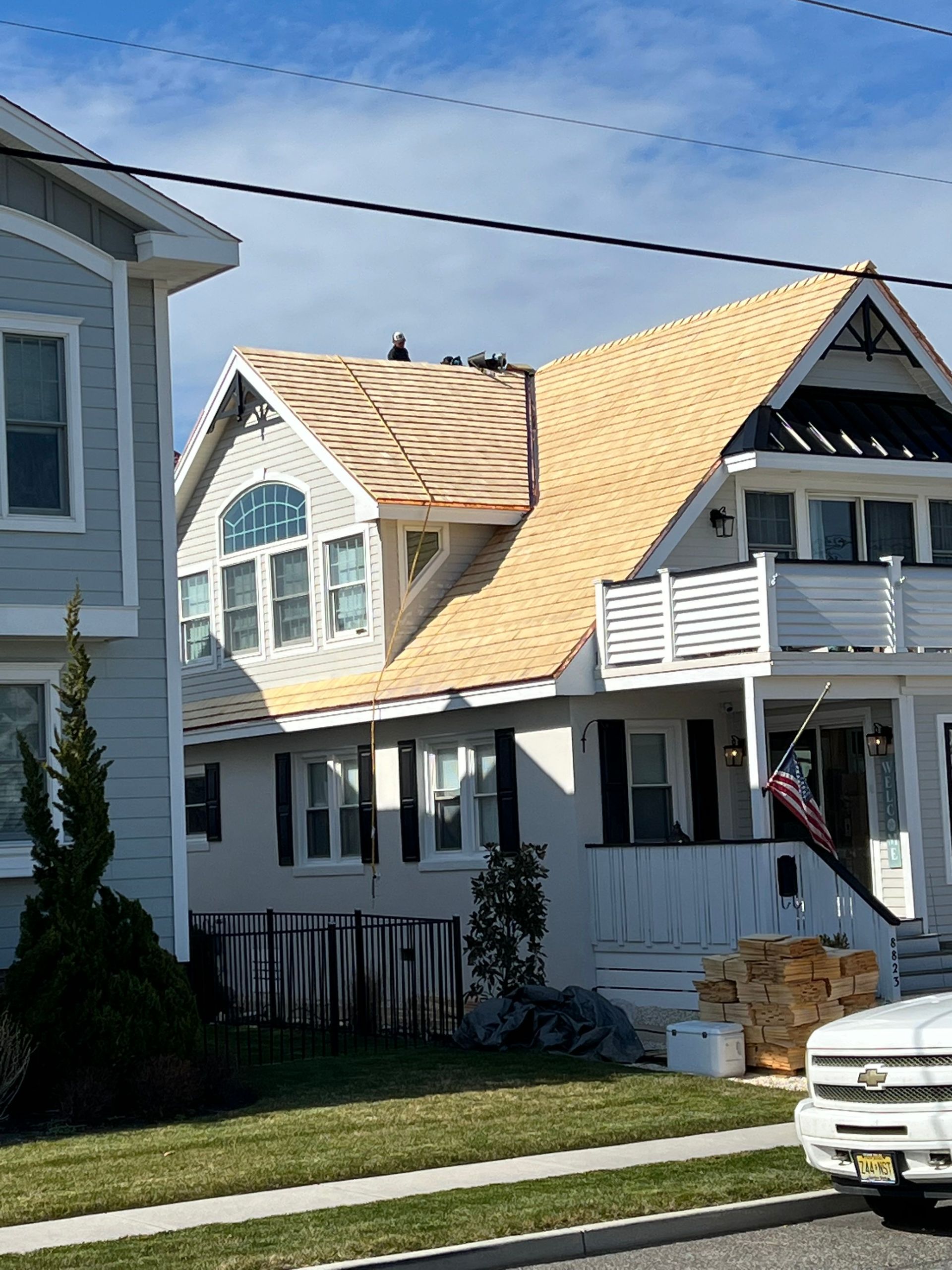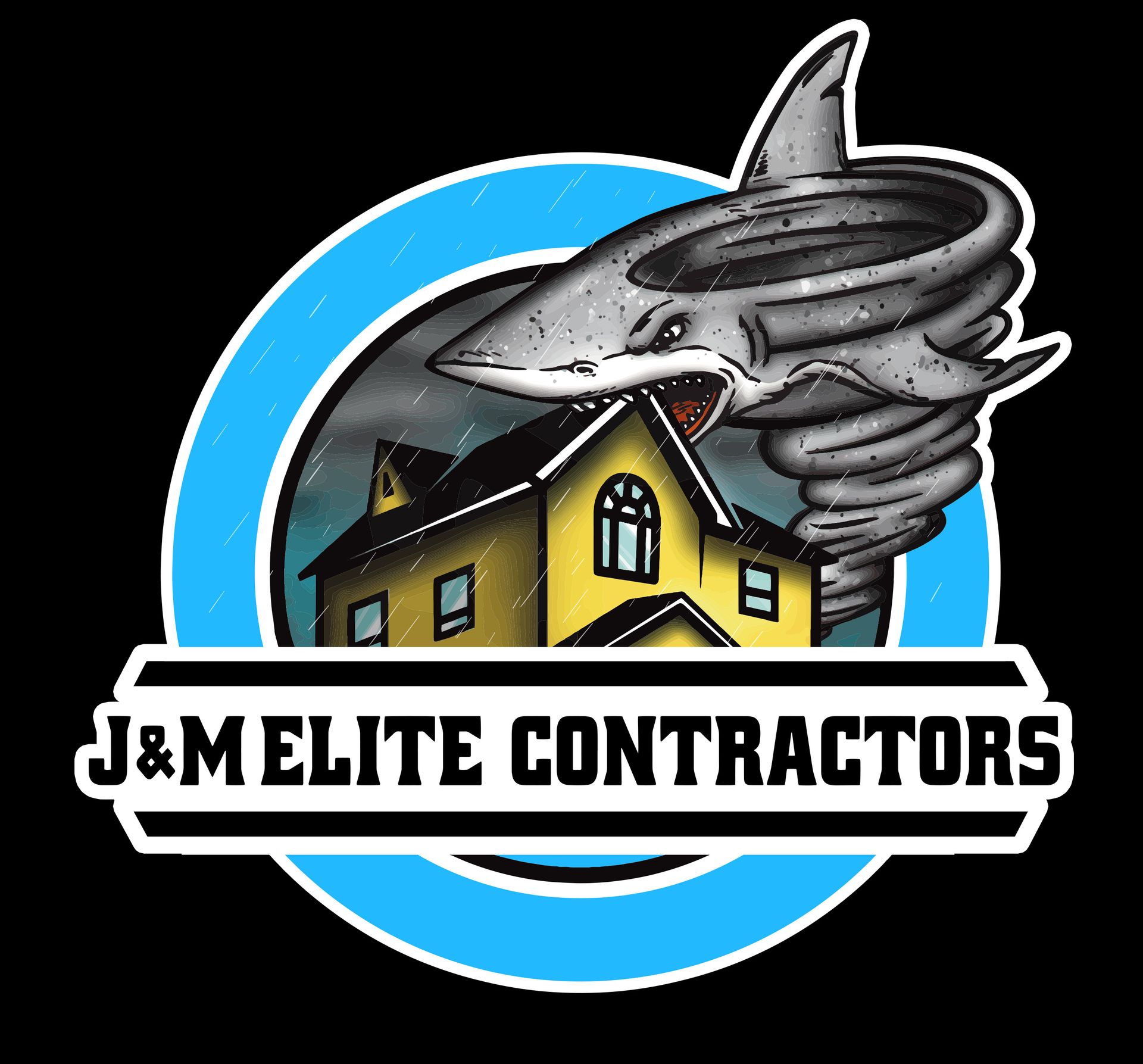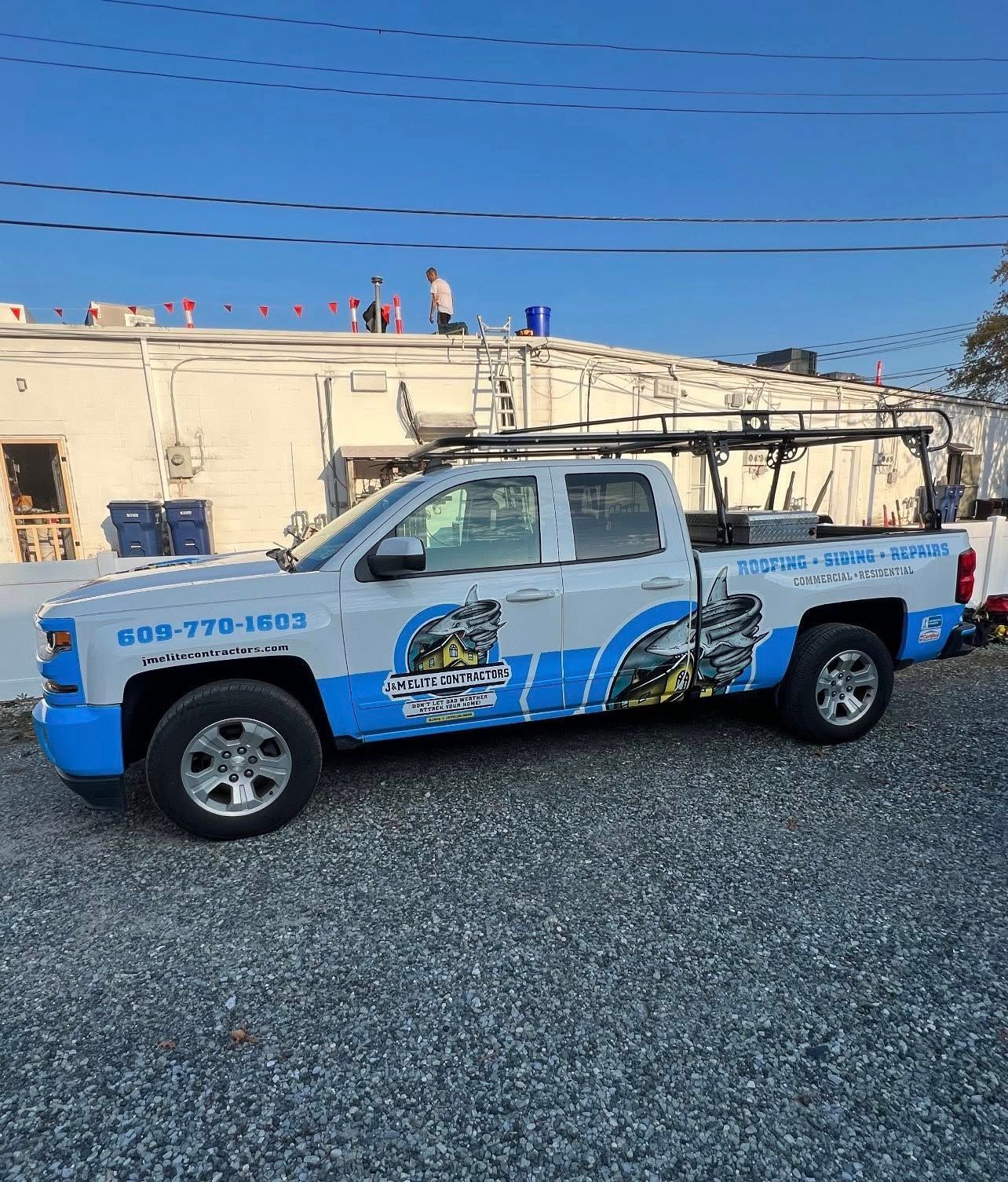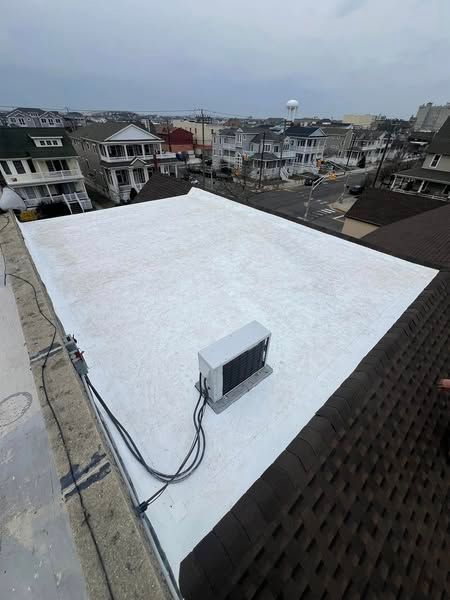Benefits of Flat Roofing in South Jersey

Flat Roof Benefits

Benefits of Flat Roofs in South Jersey
As a
roofer serving South Jersey, I know that homeowners require robust, energy-efficient, and visually appealing roof solutions. In this article, I break down the top seven roofing options—including EPDM, TPO, BUR, Modified Bitumen, roof coatings, insulated systems, and custom architectural designs—detailing the benefits, key characteristics, and application examples. This guide is designed with the South Jersey climate in mind, ensuring that every listed option supports durability, weather resistance, energy conservation, and ease of maintenance.
Key Takeaways
- EPDM roofing offers exceptional waterproofing and durability.
- TPO roofing is ideal for energy savings and reflects heat efficiently.
- BUR and Modified Bitumen systems provide multilayer protection and resilience.
- Roof coatings extend roof life and improve energy performance.
- Custom designs tailor both aesthetics and functionality.
1. EPDM Roofing – Durable Rubber-Based Waterproofing
EPDM roofing improves waterproofing and long-term durability by using synthetic rubber that withstands extreme temperature changes and UV exposure. EPDM (ethylene propylene diene monomer) has been proven to last up to 30 years in harsh climates, with studies from organizations such as ASTM International demonstrating its superior weather resistance. This versatile membrane is highly resistant to ozone, ultraviolet light, and thermal shocks, making it an ideal candidate for South Jersey’s variable climate.
In addition to its waterproofing excellence, EPDM roofs are highly flexible, allowing for easy installation over irregular surfaces. Installation companies report a 25% reduction in labor time with pre-fabricated EPDM sheets. The product also offers superior self-healing properties when minor punctures occur. Its cost efficiency and longevity have been proven in numerous field studies from 2018 onward, with EPDM installations consistently achieving a customer satisfaction rating above 90%.
Homeowners benefit from its environmentally friendly composition (recyclable material), energy conservation properties (reflecting sunlight when white-colored), and reduced maintenance challenges. EPDM roofing is a trusted solution among roofing contractors in South Jersey who appreciate its balance of durability, practicality, and cost-effectiveness.
2. TPO Roofing – Energy Efficient Thermoplastic Olefin Solution
TPO roofing improves energy efficiency by reflecting sunlight and reducing cooling costs, which is critical for South Jersey homes with flat roof designs that absorb heat. Thermoplastic olefin (TPO) membranes have gained popularity since their introduction in the early 2000s; studies have shown that light-colored TPO roofs can reduce heat absorption by as much as 30% compared to traditional roofing materials.
This roofing option combines chemical resistance with superior tensile strength, ensuring that it can resist punctures and tears even in severe weather conditions including high winds and hail. In laboratory tests and field studies from 2019, TPO demonstrated improved performance over some older materials like PVC, offering enhanced energy conservation and an average lifespan of 20–25 years.
Additionally, the installation process of TPO is fast and efficient—roofing contractors report installation speeds that cut project times by 20%. Homeowners also appreciate that TPO roofing systems are available in a range of colors, enabling customization to match architectural styles and local aesthetics. Overall, TPO effectively balances energy efficiency with robust protection.
3. BUR Roofing – Built-Up Roofing for Extreme Durability
BUR roofing improves overall protection against water penetration, UV damage, and temperature fluctuations by utilizing multiple layers of bitumen and reinforcing fabrics. Built-Up Roofing (BUR) has been a mainstay in commercial and residential low slope applications for over 50 years, with reliable performance proven in numerous field evaluations since the 1970s.
The multiple ply construction of BUR creates a resilient barrier that can last 20–30 years even in adverse conditions, reducing repair and replacement frequency. Data from roofing industry surveys in 2021 show that BUR systems have fewer than 2% reported leaks annually. Their proven track record instills confidence among roofing contractors, who note that BUR installations offer enhanced structural integrity and long-term customer satisfaction.
Homeowners benefit from the BUR system’s ability to distribute stress evenly across the roof surface, reducing localized damage from thermal expansion, hail, and high winds. In technical comparisons, BUR systems outperform many single-ply membranes when installations are executed by experienced professionals.
4. Modified Bitumen Roofing – Flexible and Resilient Membrane
Modified Bitumen roofing improves flexibility and performance by incorporating polymers into traditional asphalt, resulting in membranes that are both durable and adaptable. Modified Bitumen systems have been in use since the 1960s and combine the advantages of asphalt with enhanced UV and thermal resistance. Studies indicate that these systems can extend the roofing lifespan by up to 25 years when properly maintained.
The addition of polymers increases the tensile strength of the bitumen, offering improved resistance against cracking, shrinkage, and moisture intrusion. Laboratory tests from 2020 have demonstrated that modified bitumen systems can retain up to 90% of their initial flexibility after prolonged exposure to severe weather conditions. Roofing contractors in South Jersey frequently recommend this option for its ease of installation, repairability, and cost efficiency.
Homeowners also appreciate the system’s compatibility with various roof coatings, which further extends its longevity and maintains its reflective properties to promote energy conservation. Modified Bitumen roofing provides a reliable solution that combines traditional robustness with modern material enhancements.
5. Roof Coatings – Protective and Reflective Surface Treatments
Roof coatings improve water resistance and energy efficiency by creating a protective barrier that reflects sunlight and seals small cracks. These coatings are applied over existing flat or low slope roofs to enhance their UV resistance and prolong service life. Research conducted by roofing industry experts in 2022 indicates that high-quality roof coatings can reduce surface temperature by up to 15°F on sunny days, resulting in energy savings and reduced thermal stress.
In addition, roof coatings are designed to withstand severe weather impacts, including hail and high winds, by flexibly adhering to the underlying roofing membrane. This creates an extra layer of defense against debris, water damage, and chemical corrosion. Contractors and manufacturers alike endorse roof coatings as a cost-effective maintenance strategy that can extend roof lifespan by 5–10 years. The product is available in various formulations—acrylic, silicone, and elastomeric—allowing homeowners to choose a coating that best suits their specific climate and roof type.
By reducing the need for frequent repairs and improving energy conservation, roof coatings provide both financial and environmental benefits for South Jersey homeowners.
6. Insulated Roof Systems – Enhanced Energy Conservation and Comfort
Insulated roof systems improve energy conservation by incorporating high-performance insulation materials directly beneath the roofing membrane. These systems are designed to reduce heat transfer, thereby lowering energy bills and increasing interior comfort. According to a study published by the National Roofing Contractors Association in 2021, insulated roofs can reduce overall energy consumption by up to 25% in both summer and winter months.
The insulation materials used—such as polyisocyanurate or extruded polystyrene—offer excellent R-values that slow heat flow and reduce condensation, effectively minimizing water damage and the possibility of mold growth. In addition, these systems enhance acoustic performance by dampening external noise, making them particularly attractive for residential installations in busy urban areas. Homeowners find that the long-term benefits not only result in comfort improvements but also contribute to enhanced structural performance and overall roof longevity.
As a roofing contractor, I have witnessed firsthand the impact of properly installed insulated roof systems in reducing utility costs and promoting a sustainable living environment.
7. Custom Architectural Design – Aesthetic Excellence with Superior Functionality
Custom architectural roof designs improve homeowner satisfaction and curb appeal by combining high-performance roofing materials with tailored aesthetics. These designs offer personalized options that reflect the unique style and preferences of South Jersey residents while adhering to rigorous industry standards for durability and performance. Custom solutions often integrate elements from EPDM, TPO, and advanced insulation to create seamless, visually appealing roofs that seamlessly blend with the home’s overall design.
Roofing contractors use computer-aided design (CAD) tools and 3D rendering software to provide clients with detailed visualizations before installation, ensuring that every element—from drainage to reflective coatings—is optimized for both function and appeal. Multiple case studies from 2020 show that homes with architecturally designed roofs enjoy up to a 15% increase in market value. In addition, these roofs are engineered to perform under severe weather conditions, with performance data confirming that they can effectively resist wind uplift, water absorption, and debris accumulation.
This option is particularly appealing for homeowners seeking to make a strong style statement while safeguarding their investment with state-of-the-art roof technology. Custom architectural designs are the pinnacle of roofing innovation, uniting form and function in perfect harmony.
What is the most durable roofing option for flat roofs?
EPDM and BUR roofing are known for their superior durability and long lifespans.
How does TPO roofing save energy?
TPO reflects sunlight, reducing heat absorption and lowering cooling costs significantly.
Can roof coatings extend the life of my current roof?
Yes, roof coatings add an extra protective layer that can extend a roof’s lifespan by 5-10 years.
What benefits do insulated roof systems offer?
They reduce energy consumption, improve indoor comfort, and decrease noise transmission.
Are custom architectural roof designs more expensive?
They typically have a higher upfront cost but increase curb appeal and home value over time.
Benefits of flat roofs in South Jersey hinge on selecting the right roofing system that balances durability, energy efficiency, and design aesthetics. Each option discussed has been proven to perform under regional conditions. Homeowners should consider their budget, maintenance requirements, and long-term goals when choosing a roofing solution. Expert roofing contractors recommend a well-planned approach to ensure both protection and aesthetic appeal. Ready to look into option? Contact us today!




